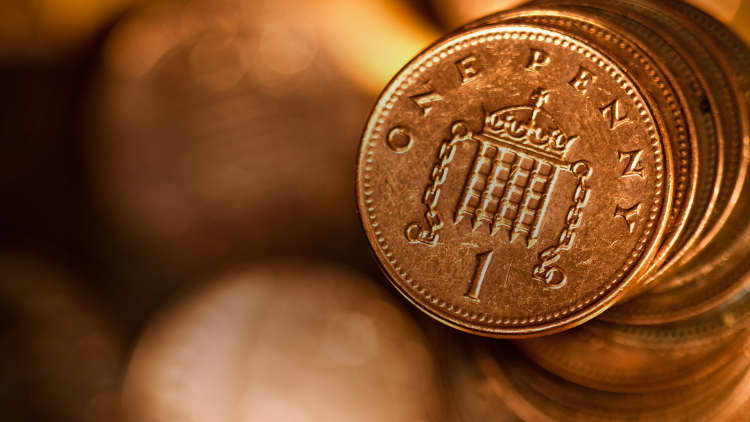
One pence and 2 pence coins will remain in circulation a year after the U.K. finance minister had called the coins "obsolete."
On Friday, he announced a task force "to safeguard the future of cash and ensure its availability for years to come."
In 2016, the U.K.'s Royal Mint, the government-owned company that produces coins for the country, revealed there are 11.3 billion pennies in circulation. But 60% of 1 pence and 2 pence coins are only used once, while 8% of pennies are thrown away.
This means the Royal Mint has to produce even more pennies to replace the ones that have gone out of circulation, about 550 million a year.
The value of small change is being debated around the globe. Australia phased out 1 cent and 2 cent coins in the 1990s, while Canada stopped producing copper coins in 2013.
In the euro zone, where 1 cent and 2 cent coins are still produced, countries like Ireland are voluntarily rounding prices to the nearest 5 cents to avoid using smaller change.
While the Royal Mint won't reveal how much it costs to make a penny — nor how much the U.K. would save by stopping production, it did say that it costs less than 1 pence to make 1 pence.
The British penny is made of steel and coated in copper. Steel prices have increased over the years, which helps explain why Canada ceased minting its copper-coated steel penny back in 2012.
In America however, 2017 research showed that it cost 1.8 cents to produce one U.S. penny.
While the U.S. cent was mostly made of copper for more than 150 years, rising copper prices forced the U.S. Mint to dramatically reduce the amount of copper used in the coin.
Now a penny is primarily made up of zinc — and is only 2.5% copper. Though ironically now zinc prices are rising too.
U.K. Finance Minister Philip Hammond acknowledged that technology has "transformed banking for millions of people" but highlighted "that many people still rely on cash."
It's estimated that 2.2 million people in the U.K. are reliant on cash, with the elderly and those in rural communities the most vulnerable to its declining use.
In Britain, 68% of people don't bother to carry or spend copper coins anymore, while one study found that Americans throw away $62 million in coins each year.
One reason for this is the rise in cashless payments. The number of non-cash transactions are projected to hit more than 875 billion globally by 2021.
But don't sign cash's death certificate just yet. It's still the most frequent form of payment in the United States, representing 30% of consumer transactions. In the U.K., cash accounts for 34% of all payments, a very close second behind debit cards. And globally, 1.7 billion people don't have access to a bank or similar financial institution.


